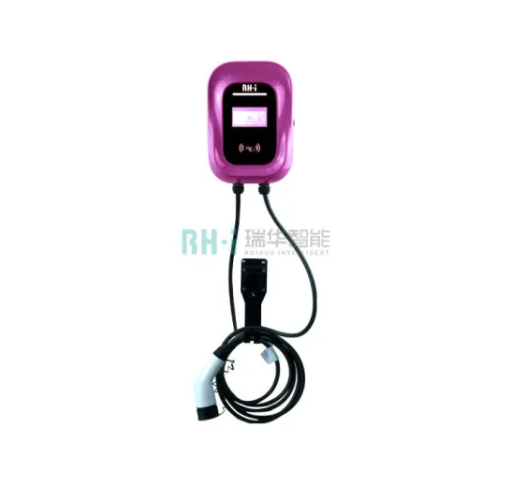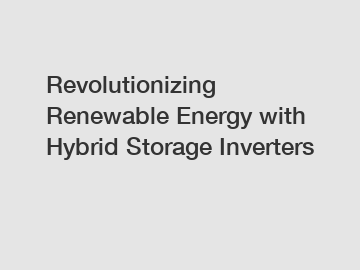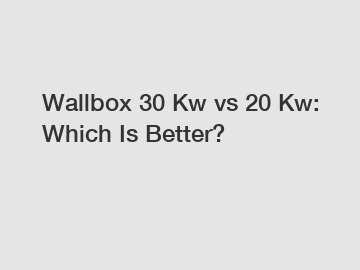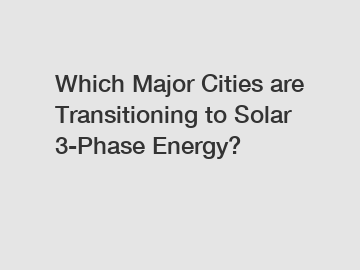22kW Three-Phase EV Charging - Is It Worth It?
As electric vehicles (EVs) continue to gain traction, the infrastructure supporting them is evolving to meet the growing demand for faster and more efficient charging solutions. One such advancement is the introduction of 22kW three-phase EV charging stations.
Understanding 22kW Three-Phase Charging:
22kW three-phase charging refers to the charging capacity of an electric vehicle charging station. Unlike single-phase charging, which operates on a single alternating current (AC) waveform, three-phase charging utilizes three AC waveforms. This enables a higher power transfer rate, resulting in faster charging times for compatible electric vehicles.
Faster Charging Times:
The primary advantage of 22kW three-phase charging is its ability to deliver faster charging times compared to lower-capacity charging stations. EVs equipped with compatible onboard chargers can take advantage of the higher power output, significantly reducing the time required to recharge their batteries. This makes 22kW three-phase charging particularly appealing for businesses, public charging stations, and fleet operators.
Optimal for Commercial and Public Spaces:
Businesses and public spaces that cater to a high volume of electric vehicles benefit greatly from 22kW three-phase charging. The faster charging times allow for a higher turnover of vehicles, making the charging infrastructure more efficient and accommodating a larger number of EV users in a given timeframe.
Compatibility and Vehicle Considerations:
Explore more:
Energy
How Wall-Mounted Charging Piles Promote Sustainable Transportation?
Are LFP Prismatic Cells the Future of Retail Energy?
Powering the Future: Unleashing the Potential of LiFePO4 50Ah Batteries
Is Ev Solutions Ltd the best provider for charging stations for electric vehicles?
Maximizing Efficiency: The Power of 40kW DC Charger
Which home car charger is best?
It's important to note that not all electric vehicles are equipped to take full advantage of 22kW three-phase charging. The vehicle must have an onboard charger that supports three-phase AC charging. Before investing in a 22kW charging station, EV owners should verify their vehicle's compatibility to ensure they can benefit from the higher charging speeds.
Residential Considerations:
For residential EV owners, the decision to invest in a 22kW three-phase charging station may depend on several factors. While faster charging is appealing, the cost of installation and the need for a three-phase power supply at home may be deterrents. It's essential for homeowners to assess their electricity infrastructure and weigh the benefits against the associated expenses.
Cost Considerations:
The installation cost of a 22kW three-phase charging station is generally higher than that of lower-capacity charging stations. However, businesses and high-traffic locations may find the investment worthwhile due to increased customer satisfaction and the ability to serve more EV users efficiently.
The decision to opt for 22kW three-phase EV charging ultimately depends on individual circumstances and requirements. Businesses and public spaces with a high demand for EV charging may find the investment justifiable for its efficiency and customer satisfaction benefits. Residential users, on the other hand, should carefully consider factors such as vehicle compatibility, installation costs, and the availability of a three-phase power supply. As the electric vehicle landscape continues to evolve, the role of higher-capacity charging stations like 22kW three-phase options will likely become more prominent in shaping the future of convenient and rapid EV charging.
Ultimate Guide to DC Fast Chargers: Speed Up Your Electric Vehicle Charging!
Maximizing Efficiency: ODM Photovoltaic Module Testing Machine
Top 5 Must-Have DC Charger Accessories Guide
Are Commercial Solar Inverters the Future?
Top Electric Vehicle Charging Solutions You Need
Revolutionizing Solar Energy Storage with 3 Phase Inverter: How do They Change the Game?
Revolutionizing Electric Vehicle Charging: Is AC Type 2 the Future?
130
0
0
Previous: What is a lithium battery used for?
Related Articles











Comments
All Comments (0)